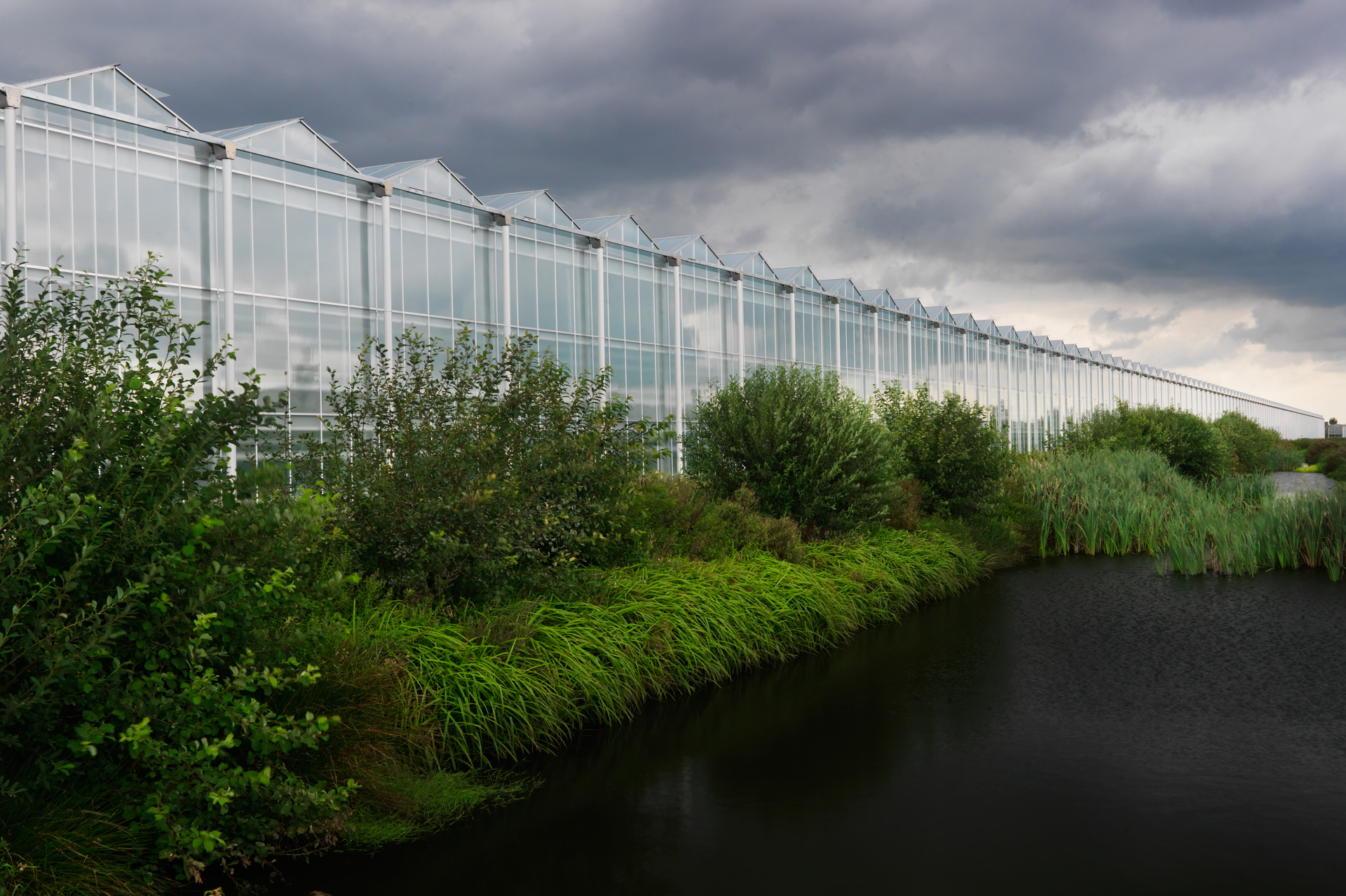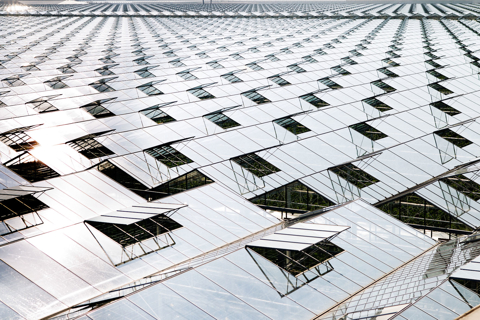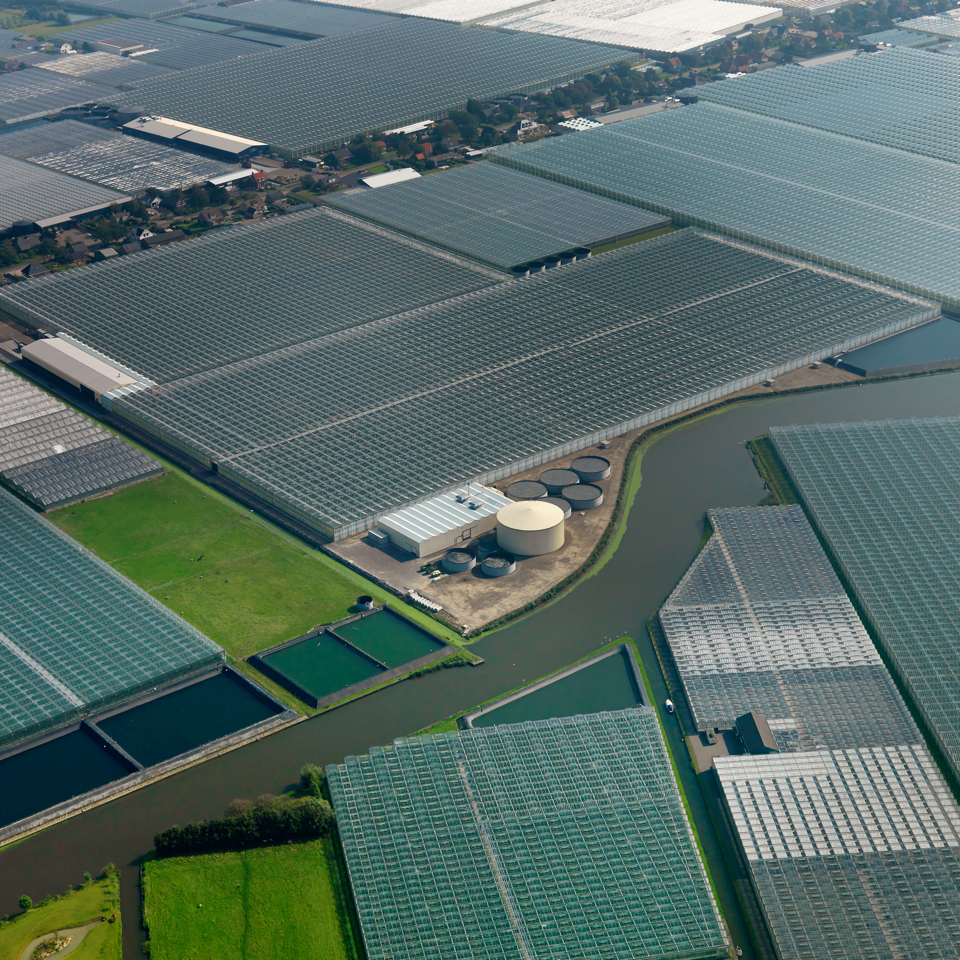While regulating water temperature isn’t traditionally included in Pre-Treatment processes, it remains crucial for the irrigation cycle. Cold water has the ability to hold more dissolved oxygen compared to warm water, an essential component for irrigation. In contrast, warmer water often provides a conducive environment for the reproduction of microorganisms. However, water that is too cold can induce shock in plants. As a result, in greenhouses, the preferred choice is to use ambient water maintained at 15-20 degrees Celsius. The management of this factor is achieved through a heat exchanger that is linked to the central heating or cooling system of the facility.
Post-Treatment of irrigation water in greenhouses

Irrigation water Pre-treatment
For the pre-treatment of greenhouse irrigation water, there are four characteristics that need to be controlled of the source water, each have their own specially developed treatment methods. In practice, technology serves more purposes and complement or supplement each-other in pretreating irrigation water. The four pre-treatment control points are, PH-control, micro-organisms, particles and water-hardness.
PH-control for irrigation water
Controlling the PH of the incoming water is of great importance to avoid algae, pathogens etc. This is especially the case when water is stored in a tank or a bassin before entering the greenhouse irrigation system. PH-pre control is done in a shunt sytem, in which water is circulated continuously and either acid or lye is dosed to the water to ensure stable PH-levels.
Removing Micro-Organisms before irrigation
For harmless and consistent irrigation water, micro-organisms are certainly unwanted. Dealing with micro-organisms for incoming water, there are two options. The first is UV-Treatment. Water is brought under pressure in direct contact with UV-lights which kills the micro-organisms. UV disinfection systems, whether they are high-pressure UV or medium-pressure UV units, this is proven technology that serves its purpose.
The second option to remove micro-organisms from the irrigation water is Ultra-Filtration, our system of choice. Unlike UV systems that kills micro-organisms, ultra-filtration in the pre-treatment of irrigation water removes them completely. The advantages of this is there are no 'residues' of the micro-organisms that could serve as food for new, live organisms. Another advantage is operational and maintenance costs, as UV-systems are high in energy consumption, and UV-lights are costly.
Making irrigation water free of particles and sediments
Particles and sediments can be filtered out. The most common technology for this is a Paper-Belt Filter. The paper-belt filter is a simple, maintenance-free filter with no backwash water. In greenhouses, there are three types of belt filters used: flat-bed, deep-bed and hydrostatic filters. Considering the application, capacity, and level of contamination the type is selcted. The chosen filter paper determines the particle size that the belt filter will remove.
Water softener as irrigation water pre-treatment
A water softener is applied to reduce chloride levels. In turnkey-projects we instal them before filling any tanks and systems, as water-hardness can directly impact the lifespan of pumps, ducts and valves. Also for irrigation purposes, depending on the water source conditions, a water softener can prevent problems in the long run and make fertilisation more efficient.
Pre-treatment with Reverse Osmosis (RO)
The most rigorous pre-treatment method for incoming irrigation water is Reverse Osmosis. This removes all micro-organisms, particles and minerals from irrigation water. This also removes good minerals, making fertilisation a more precise, but costly endeavour.


Learn more about post-treatment of irrigation water?
Learn more about post-treatment of irrigation water?
Sources of Irrigation Water
City water for greenhouse irrigation
Utilizing city water, also known as tap water, is generally the most stable and reliable source for irrigation water in many instances. It undergoes pre-treatment at the source, presenting both advantages and disadvantages. If the water has high chloride levels, considering a water softener would be prudent. Additionally, the temperature of city water is typically already at the desired ambient level. However, it is important to note that city water is usually the most expensive option available.
Surface water as source
Three types of surface water include perennial, ephemeral, and man-made. Perennial water is consistent, but ephemeral and man-made types, found in various locations, aren't always reliable. For greenhouse irrigation, a dependable year-round source is crucial as quality and quantity can vary, making pre-treatment more complex due to potential presence and fluctuation of microorganisms and minarals.
Using well water for greenhouse irrigation
Well water can serve as a reliable source of irrigation as it is often available consistently and can be rich in minerals beneficial to plant growth. However, it is crucial to regularly test well water for contaminants and adjust Pre-Treatment accordingly to ensure it meets the quality standards necessary for irrigation. Additionally, depending on the depth and location of the well, water availability and quality can vary, requiring careful consideration and possibly supplementary water sources during periods of high demand or low supply.
Rainwater Collection
Rainwater serves as an excellent irrigation source and can be collected and reused directly from the greenhouse structure. However, its availability is inconsistent, necessitating supplementation or backup from other sources.

Irrigation Water Temperature
